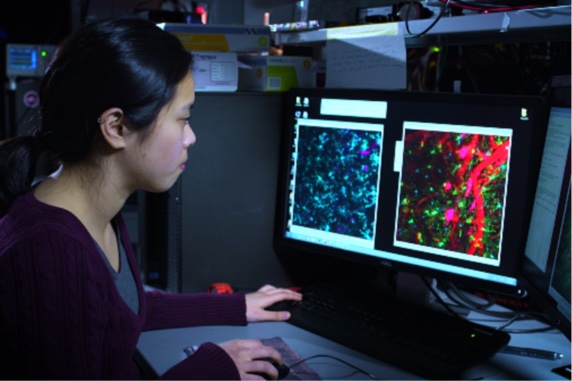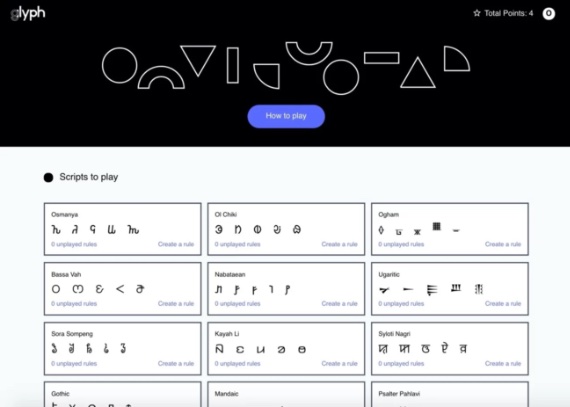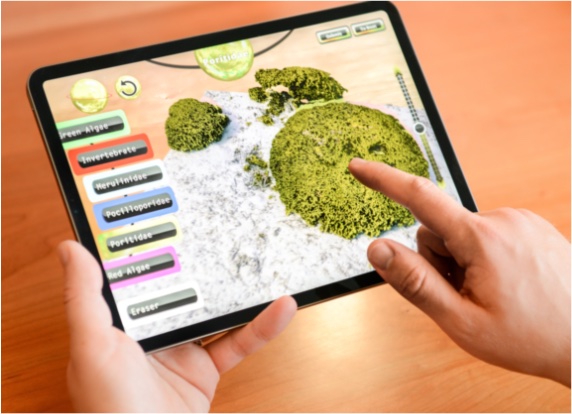Citizen science games are one of the best ways for scientists to involve the public in their research, both to gather huge amounts of data in record time and to perform tasks and solve problems that are beyond the capacity of current computers and software, or that are not feasible to tackle in this way because they would require an enormous investment of time and/or money. This makes it necessary to look at less conventional methods, such as gamification, which transforms tasks such as the collection, analysis and processing of large amounts of data and information into fun and addictive video games and apps able to recruit large numbers of highly motivated and engaged participants.

Phylo: A game to accelerate genome sequencing
Comparing the genomes of different species is a fundamental tool for deciphering genetic material and identifying genes, such as those responsible for inherited diseases. The main method used to make this comparison is called multiple sequence alignment. This is the process of aligning identical regions in the sequences of genetic material from different individuals or organisms. However, the algorithms designed for this purpose do not guarantee complete reliability due to the computational complexity required for this operation, which leads to the introduction of errors in the alignment.
In 2010, researchers at McGill University in Montreal decided to harness the computational power of a large group of people to overcome this problem by creating Phylo, a computer video game that turns DNA sequences into rows of coloured tiles in which players have to spot inconsistencies and correct them by aligning them correctly. By doing so, players inadvertently detect errors made by the algorithms. In fact, by the end of 2020, the game had detected and corrected more than 1.5 million inconsistencies.

Colony B: Colonies of bacteria that help unravel the microbiome
Humans have an extraordinary ability to solve visual problems, and many citizen science games take advantage of this. One such example is Colony B, which was designed by researchers at McGill University in the wake of the successful results obtained by Phylo. Launched in 2016, the game was created with the aim of helping to unravel the human microbiome and, in particular, to identify groups of individuals with a similar microbiome in order to establish a relationship between health and lifestyle.
To do this, Colony B converts each individual’s microbiome into a bacterium, and the goal is to identify clusters or groups of bacteria—which are actually groups of similar microbiome communities—that begin to form in the midst of the throng of bacteria that appear on the screen.

Sea Hero Quest: One app to rule them all
One of the manifestations of Alzheimer’s in its earliest stages is disorientation, or more specifically, loss of spatial navigation capabilities. The problem is that in most cases this loss is masked by the natural decline that comes with age. How can it be detected in time? The best way is to try to establish a baseline measure of normality in healthy people and, within that framework, identify those disorientations that are abnormal. This is the purpose of Sea Hero Quest, an addictive game of navigation in unknown and labyrinthine environments that has attracted millions of players from all walks of life, whose scores will make it possible to establish how spatial orientation evolves according to age, sex and other conditioning factors. These data have already allowed some interesting conclusions to be drawn. For example, that the decline begins at an earlier age than previously thought, that men and women use different navigation strategies, and that people who live and grew up in rural environments have better orientation skills than their urban counterparts.

Stall Catchers: Playing to combat dementia
The presence of blockages of white blood cells in the capillaries that supply the brain is directly linked to the onset of Alzheimer’s and other forms of dementia. But until now, there has been no algorithm that can identify these small blockages, or stalls, as effectively as the human eye. Fortunately, there is a way to turn the task of identifying them from images of the brain into a playful challenge. This is what Stall Catchers does, an app that turns players into trackers of potential blockages in images of mouse brains. This information will allow scientists to determine how diet and other external factors affect the appearance of these clots and, more importantly, to test how effective different treatments are in preventing the appearance of these blockages, which will significantly reduce the time it takes to get an effective treatment approved.

Turbulence: When the most important problem in classical physics is a game
Although most citizen science video games and apps are geared towards biomedical research, this resource can also be used to tackle all kinds of problems and research in any discipline. One example is Turbulence, a game designed to help physicists study and understand the dynamics of fluids under extreme conditions, and in particular those that lead to the formation and dissipation of turbulence, considered the most important unsolved problem in classical physics. Players of Turbulence contribute to its solution by competing to identify the appearance of patterns in the centre of the turbulence that indicate when and where the turbulence will begin to dissipate.

Glyph: An unconventional letter game
Glyph is an example of a citizen science game that takes a different slant, because sometimes there are questions that cannot be answered in a conventional way and require a different and creative approach. For example, studying the world’s alphabets based on the shape of their letters. In this case, the aim was to create a specific app for the limited number of people who were really interested and motivated by the project. The challenge: to propose rules for classifying the letters of an alphabet (for example: they all contain a diagonal line). Researchers could then use these rules to study how alphabets have evolved and how their design affects key aspects such as our ability to understand and learn, or how our brains process written messages.

NeMO-Net: How to train an AI
On other occasions, the main objective of citizen science games is to take advantage of some of the innate capabilities of human beings in order to train an algorithm or an artificial intelligence program to perform a task. This is the aim of NeMO-Net, a game in which participants have to draw different types of corals and organisms on the ocean floor. This information is used to train a NASA program designed to classify coral reefs from (blurry) satellite images.
Comments on this publication